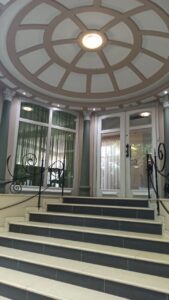Sustainable construction: How can Subotica become a model?
Sustainable construction is more than just a buzzword; it’s a necessity in today’s world where environmental concerns are at the forefront of global discussions. As cities grow and urbanization accelerates, the need for eco-friendly building practices becomes increasingly urgent. Subotica, a charming city in northern Serbia, has the potential to become a model for sustainable construction. With its rich cultural heritage and unique architectural styles, Subotica can lead the way in integrating sustainability into its building practices. This article explores how Subotica can embrace sustainable construction and set an example for other cities.
Understanding Sustainable Construction
Sustainable construction refers to the practice of creating buildings and infrastructure that are environmentally responsible and resource-efficient throughout their life cycle. This includes everything from site selection and design to construction, operation, maintenance, and eventual demolition. The goal is to minimize the negative impact on the environment while maximizing the use of renewable resources. In Subotica, this could mean utilizing local materials, reducing waste, and implementing energy-efficient technologies.
One of the key principles of sustainable construction is the use of renewable energy sources. Subotica has abundant sunlight, making it an ideal candidate for solar energy installations. By incorporating solar panels into new buildings and retrofitting existing structures, the city can significantly reduce its carbon footprint. Additionally, promoting the use of geothermal energy and wind power can further enhance Subotica’s sustainability efforts.
Another important aspect is water conservation. Sustainable construction practices can include rainwater harvesting systems, greywater recycling, and the use of drought-resistant landscaping. By implementing these strategies, Subotica can not only reduce its water consumption but also create a more resilient urban environment that can withstand the challenges posed by climate change.
Community Engagement and Education
For Subotica to become a model of sustainable construction, community engagement is crucial. Local residents, builders, and policymakers must work together to promote sustainable practices. This can be achieved through workshops, seminars, and community events that educate citizens about the benefits of sustainable construction. By fostering a culture of sustainability, Subotica can empower its residents to make informed decisions about their buildings and neighborhoods.
Collaboration with local universities and research institutions can also play a significant role in promoting sustainable construction. By partnering with academic experts, Subotica can develop innovative solutions tailored to its unique needs. Research projects focused on sustainable materials, energy efficiency, and waste reduction can provide valuable insights and practical applications for the community.
Moreover, involving local artisans and craftsmen in the construction process can help preserve Subotica’s cultural heritage while promoting sustainability. By integrating traditional building techniques with modern sustainable practices, the city can create a unique architectural identity that reflects its history and commitment to the environment.
Policy and Incentives for Sustainable Development
To truly become a model for sustainable construction, Subotica must implement supportive policies and incentives. Local government can play a pivotal role by establishing regulations that encourage eco-friendly building practices. This could include zoning laws that favor green buildings, as well as incentives for developers who prioritize sustainability in their projects.
Financial incentives, such as tax breaks or grants for sustainable construction projects, can also motivate builders to adopt greener practices. By reducing the financial burden associated with eco-friendly materials and technologies, Subotica can attract more developers to invest in sustainable projects. This not only benefits the environment but also stimulates the local economy.
Additionally, creating a certification program for sustainable buildings can help raise awareness and set benchmarks for quality. By recognizing and promoting buildings that meet specific sustainability criteria, Subotica can inspire others to follow suit. This program could also serve as a marketing tool, attracting eco-conscious tourists and residents who value sustainability.
In conclusion, Subotica has a unique opportunity to become a model for sustainable construction by embracing eco-friendly practices, engaging the community, and implementing supportive policies. By prioritizing sustainability, the city can not only reduce its environmental impact but also enhance the quality of life for its residents. As Subotica moves forward, it can inspire other cities to follow its lead, proving that sustainable construction is not just a dream but a tangible reality. With the right approach, Subotica can shine as a beacon of sustainability in the region and beyond.


